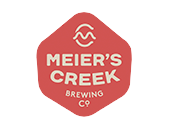The Alcohol and Tobacco Tax and Trade Bureau (TTB) sets out specific filing and reporting requirements for every brewery—and failing to meet these requirements is expensive. Businesses can expect to pay approximately 5% of the taxes for a late tax filing in penalties and fees each month, with late payment or underpayment also incurring fees.
Of course, proper filing and reporting of TTB documents also have a hefty cost, with businesses spending tens of hours every month chasing down data, confirming information, and submitting reports. The key to running a brewery where you can scale up in operations (or simply spend more time on the brewing tasks you love) is using an effective solution to streamline the administrative, financial, and operational tasks whenever possible.
That’s where a multi-faceted reporting tool comes in. Imagine how smoothly reporting and completing your monthly or quarterly Brewer’s Report of Operations could be when you can do things like:
- Automatically pull properly formulated data into each of the fields based on accurate, real-time numbers.
- Tag fields throughout your brewery management software so they go to the right lines and fields of any complex report.
- Have the reports automatically check themselves for bad data and contradictions.
- Maintain a comprehensive record of your supporting data, past reports, and historical records in the event of in-house auditing or third-party audits.
These types of capabilities do more than save you time in fulfilling your reporting obligations. They actually make your reports and your business stronger. Learn more about the growing role of technology in optimizing operations and, more specifically, shrinking down your BROP time spend to a fraction of what it requires now.
What Is the Brewer’s Report of Operations?
Breweries and craft beermakers of all sorts and sizes need to complete a Brewer’s Report of Operations, either on a monthly or quarterly basis. This requirement is managed by the TTB and functions as an in-depth record of your business’s inventory at different stages of the production, finishing, storage, transportation, and sales processes. Its two main parts—the Beer Summary and the Cereal Beverage Summary—require very specific numbers that cross-reference with other fields and work in tandem with past reports to create an ongoing history of your products’ movement throughout the market.
Related: 6 Keys to Effective Brewery Inventory Control
This report is due by the 15th of the month following the end of the applicable period. For some breweries, this makes the middle of every month hectic; other businesses will need to complete their TTB Brewer’s Report of Operations by the following dates:
- April 15th (for the January-March period)
- July 15th (for the April-June period)
- October 15th (for the July-September period), and
- January 15th (for the previous year’s October-December period)
This might leave your business doing double duty with overlapping tax filing requirements, all while you still need to maintain consistent business operations and production cycles to meet demand.
The Key to a Good Report Is Easy Access to Accurate Data
The biggest headache that breweries have regarding BROPs isn’t necessarily the frequency of the requirement. Even the form itself, coming in at two pages, isn’t that long. But the in-depth grid of numbers occupying the majority of its first page demands incredibly precise data.
Companies must track down beer received from different sources, beer removed from even more sources, and any beer that was destroyed, lost, or otherwise part of a shortage. Some of the specific challenges that modern businesses often encounter with filling out the report accurately include the following:
- Each field often requires data added together from multiple different subcategories.
- Isolated systems might not speak to each other, requiring employees to log in and track down answers across multiple different portals.
- Filling out the report on time requires having upstream data sources compile and complete their own data records within a short window of time.
- The numbers may simply not add up—and it can take a lot of time to figure out why.
How Breweries Used to Manually Manage Report Requirements—And How Tech-Enabled Processes Can Do It Better
Fully manual reporting will likely have even more complications. Reporters will need to check paper-based records for each of the fields, do the math by hand, and then double-check all of their work. You may even want a second set of eyes on the report to make sure there aren’t any errors.
To a certain degree, business-agnostic technology can help. Spreadsheets can do the math, and your employees can walk around with a tablet to track down all the records or actually go into different parts of your facilities to get data. But even spreadsheets are just fast-acting clipboards and calculators.
Compare how manual processes work compared to software like Ekos’s Brewer’s Report of Operations Tool:
Formatting the Fields
- Manual—TTB does not allow blank fields, and quantities must be reported to the second decimal place. This requires detailed adherence, and even experienced employees will make mistakes.
- Automated—The data fields can automatically be filled in to the appropriate decimal place, and any improperly blank fields will be flagged automatically.
Cross-Checking the Numbers
- Manual—Altogether, the numbers must tell a cohesive story, and it’s easy to get things wrong. While TTB has provided a cheat sheet of helpful hints, even scanning through the resource can be overwhelming.
- Automated—All the rules dictating which fields must align or add together will be automatically tested by rules engines behind the scenes. When the software notices numbers that don’t add up, they’ll be automatically flagged or corrected by data from integrated sources. With Ekos, the fields are also clickable so you can dig deep into each number for troubleshooting, confirmation, or deeper investigations.
Accumulating the Data
- Manual—To complete the form, TTB recommends having the previous report on hand, as well as documentation to support all of the numbers. This might include batch records, invoices for the past period, excise tax reports, and incident reports. To streamline manual processes, it helps to have all of this information in front of you at once.
- Automated—This is where automation software truly shines. You can:
- Build prepopulated TTB report forms that automatically include business details.
- Tag information as it enters the system (e.g., inventory, seasonal batches, storage volumes, distribution, etc.) so it automatically orients to the right fields or field-specific calculations.
- Create data sets that only pull numbers from the right month or quarter.
Related: A Guide to Managing Brewery Distribution
Correctly Identify Your Business
- Manual—The devil is in the details. At the top of your report, you’ll need to add your EIN number, registry number, exact name and address as written on your Brewer’s Notice, and other details. TTB recommends having the documentation in front of you as you’re working to minimize the risk of a mistake and confirm the details in your working memory.
- Automated—This information automatically prepopulates, either from a templatized report, the past report, or your business entity fields. You don’t even have to glance at it or pull out your business entity paperwork.
Getting It Done on Time
- Manual—You have to remember the deadlines, the logins, or the address for paper-based submission. If it’s late, that’s a serious problem. You also have to rely on everyone else getting their numbers to you in plenty of time so you can wrap it all up.
- Automated—Never miss a deadline. Your software will alert you when something is due (or alert you several days before the deadline), flag missing information, and even send reminders to people who haven’t finished their upstream to-dos. You can also build in approval steps, filing SOPs, and everything else so you minimize delays or uncertainty.
When you think through the tasks of completing each Brewer’s Report of Operations, automation clearly outperforms manual processes. That’s never been a secret—it’s just been a matter of having industry-specific software that is built to provide exactly the details and insights that TTB demands.
How Ekos Software Makes Completing the Brewer’s Report of Operations Better
Ekos is a complete ecosystem of brewery- and vintner-specific business tools and resources for managing inventory, operations, and reporting obligations. With our tool, you can generate pre populated TTB reports with the business details and quantities that reflect business activity over the past months and quarters. By optimizing this process with our robust data software that integrates with all of your operational tools, you get:
- Accuracy—Data is more accurate, without the risk of human or transcription errors. The software automatically pulls information into fields, double-checks the numbers, and handles the calculations.
- Speed—Significantly reduce the number of hours you spend every month on TTB reports. Build templatized forms, generate reports that are pre populated, and tag data so it feeds directly to the reports moving forward.
- Transparency—For Investigations, Seasonal Products, and Records Checking: When you need to, you can drill down into the numbers. Find the source of different fields, check the calculations, and uncover any errors in the tags or data mapping for an even more efficient process next time.
- Tag Data Fields From the Start—Sorting data and data sources from the beginning does the heavy lifting on what little manual work remains—and this capability is good for more than TTB reports. Tag data by region, product type, date range, and any other distinguishing feature for all the federal, state, and in-house reports you need.
Even better, you get a company that lives and breathes brewery management by your side to make it all happen. Our customer service and support teams can help you roll out the software, learn more about all its different features and functionalities, and make sure you’re creating the right digital environment to optimize your business. Reach out today for a demo to discover how you can save more time and submit accurate BROP documents.




